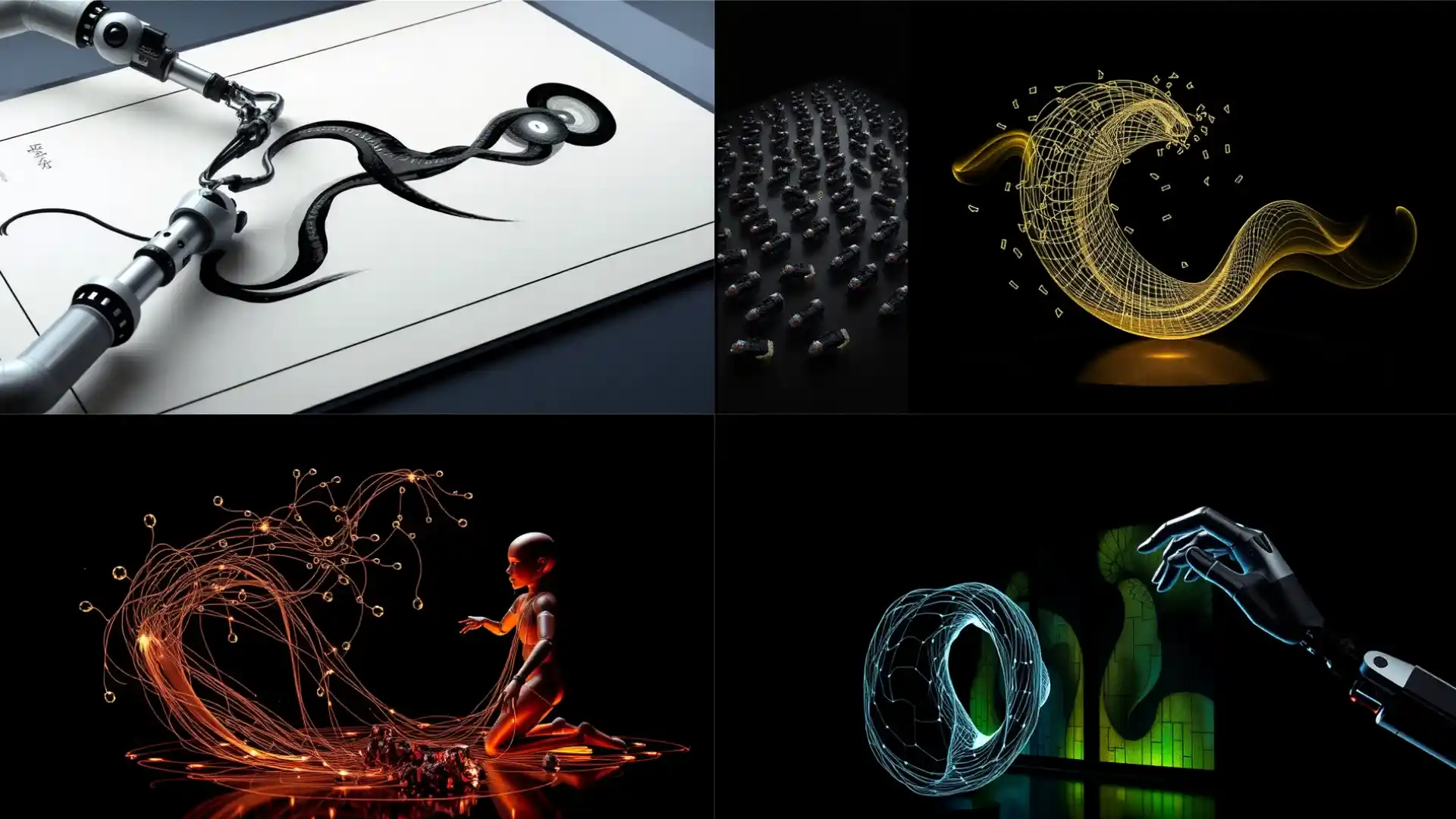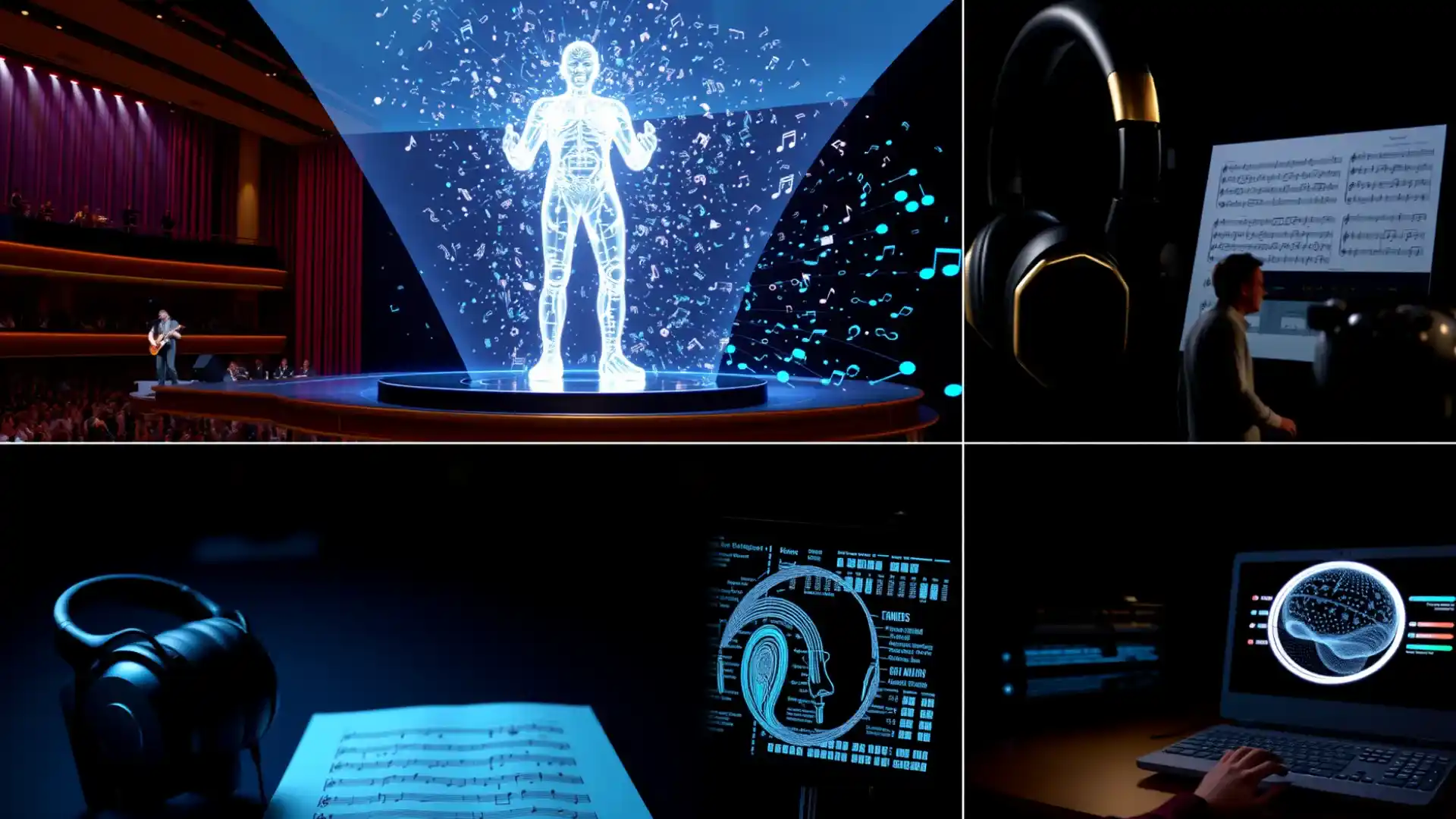Table of Contents
The impact of AI on creative industries is rewriting the rules, increasingly changing how art and music are produced, consumed, and understood. Traditionally creativity has always been seen as a solely human quality, but an array of rapidly developing AI-powered models challenges that notion. These technologies can perform certain tasks automatically but work with artists, musicians, and other creative professionals to generate something innovative and original.
This shift opens up a debate about authorship, ethics, and the future of creativity while simultaneously being filled with possibilities in artistic expression and engaging audiences.
Redefining Creativity: AI in Visual Arts
The impact of AI on creative industries is perhaps most visible in the field of visual arts, where it has enabled entirely new styles and forms. Generative Adversarial Networks, for instance, produce art that is both quite realistic and expresses personal style. Edmond de Belamy, an AI algorithm portrait, sold for $432,500 at Christie’s auction house in 2018-break the records.
DALL·E, MidJourney, and other AI tools have further democratized art creation, allowing almost anybody to generate images by describing their vision. According to a report by Market Research Future, the AI artists market is projected to witness a growth of approximately 35%, heavily backed by the needed searched content for digital games, advertisements, and social media.
But with AI gaining in the arts means questioning intellectual property and originality. Who owns art created with AI-the programmer, the user, or the AI? While still behind in this field, legal and ethical structures are catching on.
However, these advancements come with challenges. The question of authorship looms large: Who owns the rights to an artwork produced by an AI? Is it the programmer, the user, or the AI itself? Legal frameworks have yet to catch up, leaving creators and technologists in a gray area.

Music and Soundscapes Reimagined
AI is reorienting the music industry with its use in the new composing, recording, and distribution of songs. Platforms like Amper Music and AIVA enable musicians to create symphonies, soundtracks, or jingles with very little input. These tools analyze vast music databases to assemble pieces according to particular stylistics and emotional tones.
Streaming platforms such as Spotify further exemplify AI’s grip on creative industries. Spotify blends audio into individualized playlists and recommendations through social media and algorithms. Business of Apps notes that the platform’s Discover Weekly playlist reaches the ears of 40 million users every week, proving how AI is forming habits of music listening.
AI’s influence reaches even into live performances and collaborations. For instance, Grammy-winning artist Taryn Southern composed her album, I AM AI, in collaboration with the help of AI tools. This conflating of human and machine creativity sets new rays in musical creativity.

AI’s Broader Impact on Creative Industries
Beyond visual arts and music, the impact of AI on creative industries is radically transforming filmmaking, fashion, and literature. Artificial intelligence is already used in filmmaking to analyze scripts, do editing jobs, and even CGI effects. Disney, for example, uses artificial intelligence to improve visual effects and forecast audience preferences, which, in turn, improves storytelling and the rigors of production.
In literature, AI platforms such as OpenAI’s GPT models are being utilized to draft storylines, write poetry, and assist authors with editing. This has provided fresh avenues for writers, who are now able to experiment with styles and narratives in conjuring with AI.
Fashion is also benefiting from the impact of AI on creative industries. AI-enabled design tools predict trends, optimize supply-chain logistics, and provide fashion inspiration. Brands such as Gucci and Nike use artificial intelligence to drive up customer experiences through virtual try-ons and personalized recommendations.
Bridging the Gap Between AI and Human Creativity
The most fascinating thing about the impact of AI on creative industries is that it means a collaboration, not a takeover. Rather, it will enhance human capability through gigantic mundane tasks, productivity improvement, and the introduction of new ideas.
In the film industry, artificial intelligence algorithms in the creative industries are employed for script analysis, video editing, and sometimes even casting choices. It has already been employed by Warner Bros. to predict box-office performance and audience preferences to better inform decision-making processes. Similarly, Adobe’s Sensei AI adds to the creative work process in Photoshop and Premiere Pro through smart recommendations and routine work automation.
In this regard, a 2023 survey conducted by PwC found that 62% of creative professionals who utilized AI reported higher job satisfaction catalyzed by improved efficiency and creative freedom.
Future Outlook
The fate of creative industries in the realm of AI will not be a matter of competition but one of collaboration. AI tools are not going to replace human creativity but are going to be even more intuitive and will free the creators to focus on their overall vision with technical and repetitive tasks delegated to machines. That could be the workings of a real renaissance for artistic inventiveness, just imagine this working in collaboration with humans and AI to discover new waters of creativity.
Along with natural language processing, computer vision, and machine learning, the use of AI will be more integrated with the creative process. In fact, Adobe is using Sensei AI, making smart suggestions and automated processes available to creative professionals in tools like Photoshop and Premiere Pro, to elevate their productivity and efficiency.
The economic aspect seems equally encouraging. The AI-in-Media Market is largely expected to grow from USD 8.21 billion in 2024 to USD 51.08 billion in 2030, at a CAGR of 35.6%, MarketsandMarkets says. Therefore, AI is continually becoming more influential in creative industries but is also able to drive innovation in other arenas.
Ethical Considerations and Challenges
Nonetheless, the rapid integration of AI with the creative industries raises ethical questions. The most significant of these is job displacement, particularly for creatives whose work involves repetitive tasks. For instance, graphic designers may face challenges as AI-generated designs become more sophisticated and accessible.
Concerns about copyright infringement are also on the rise. Many AI algorithms are trained on preexisting works without explicit permission from the original artists, prompting legal disputes. A glaring example is the lawsuits that an AI art generator has undergone for training its models on copyrighted material.
In addition, overreliance on AI in creative processes may lead to market saturation with homogenized content, possibly eroding originality and authenticity. Striking a delicate balance between human input and machine creativity is essential in keeping intact the artistic essence of creative industries.
Opportunities and Innovations
Despite these challenges, the potential benefits of the impact of AI on creative industries are immense. By automating repetitive tasks, AI allows creators to focus on ideation and high-level decision-making. For example, Adobe’s AI-powered tools like Sensei streamline tasks such as photo editing, enabling photographers to concentrate on artistic composition.
AI also democratizes creativity, making professional-grade tools accessible to non-experts. Apps like Canva, which incorporate AI-driven design suggestions, empower users without formal training to produce visually appealing content. Similarly, amateur musicians can use AI tools to compose, mix, and produce tracks with minimal resources.
Collaboration between humans and AI is another area ripe for exploration. Musicians like Taryn Southern have used AI as a co-creator, blending human intuition with algorithmic precision. Her album I AM AI is a testament to how AI can augment rather than replace human artistry.
Conclusion
AI on creative industries is a double-edged sword. On one hand, it empowers artists and musicians with innovative tools, democratizing creativity and pushing the boundaries of what’s possible. On the other, it raises complex questions about authorship, authenticity, and the very nature of creativity itself.
As we navigate this evolving landscape, it is crucial to recognize that AI is not here to replace human creativity but to redefine and expand it. The challenge lies in harnessing its immense potential responsibly, ensuring that the symbiosis between human ingenuity and machine intelligence fosters a richer, more diverse creative ecosystem. This includes addressing ethical concerns, preserving the essence of originality, and embracing AI as a collaborative partner rather than a competitor.
The future of AI in creative industries depends on striking this delicate balance—leveraging its strengths to inspire innovation while upholding the principles that make creativity uniquely human.
Are you ready to embrace the possibilities of AI in your creative journey? Let’s shape the future of creativity together.